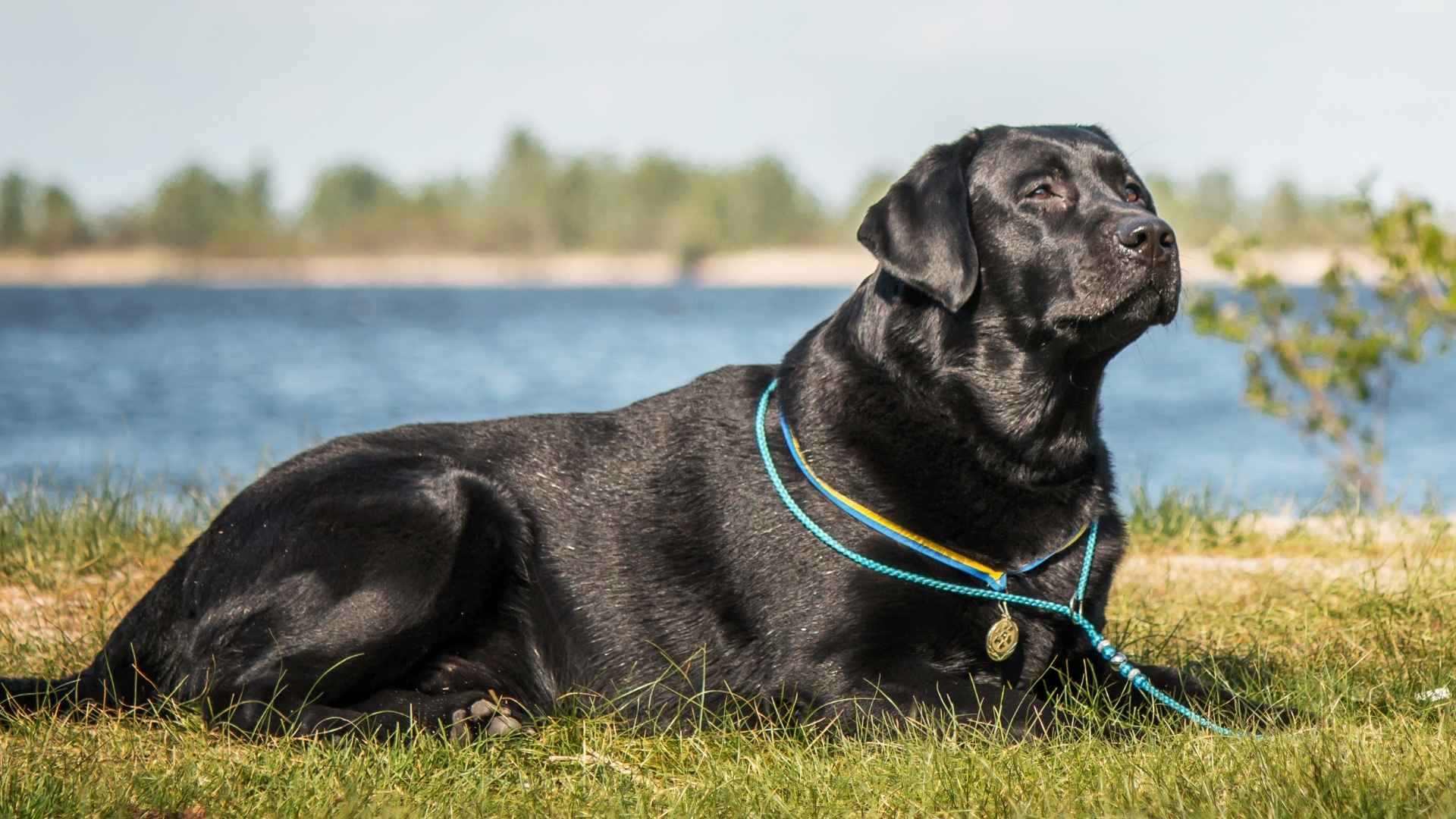Big dogs often steal our hearts with their gentle souls, goofy antics, and bear-sized cuddles, but the common belief that they don’t live long can be heartbreaking. Fortunately, that’s not always true. Some large dog breeds defy the odds and offer long, love-filled years by your side.
Whether it’s genetics, lifestyle, or good old-fashioned love, a handful of large breeds are known for surprising longevity.
These dogs don’t just bring presence and protection—they bring years of loyal companionship, often well into their double digits. And when you care for them right—with a healthy diet, proper exercise, and routine vet care—they can stick around longer than most people expect.
Here, we’re spotlighting the large breeds with the longest lifespans. If you’ve always dreamed of having a big, huggable dog without the heartbreak of an early goodbye, this list is your first step to finding the right one. Let’s meet the giant dogs built for the long haul.
Long Lifespan Large Dog Breeds
1. Saluki

Average Lifespan: 12-14 years
Height: 23-28 inches at the shoulder
Weight: 40-60 lbs
The Saluki is like the royal gazelle of the dog world—ancient, elegant, and built for speed. With origins dating back thousands of years, this breed was treasured by nomadic tribes for its remarkable hunting skills and incredible endurance. If dogs had an Olympic marathon, the Saluki would win gold every time.
Slim, sleek, and feathered with silky fur on their ears and tail, Salukis look like they just sprinted out of a desert sunset painting. These pups are incredible runners, capable of covering long distances at blistering speeds.
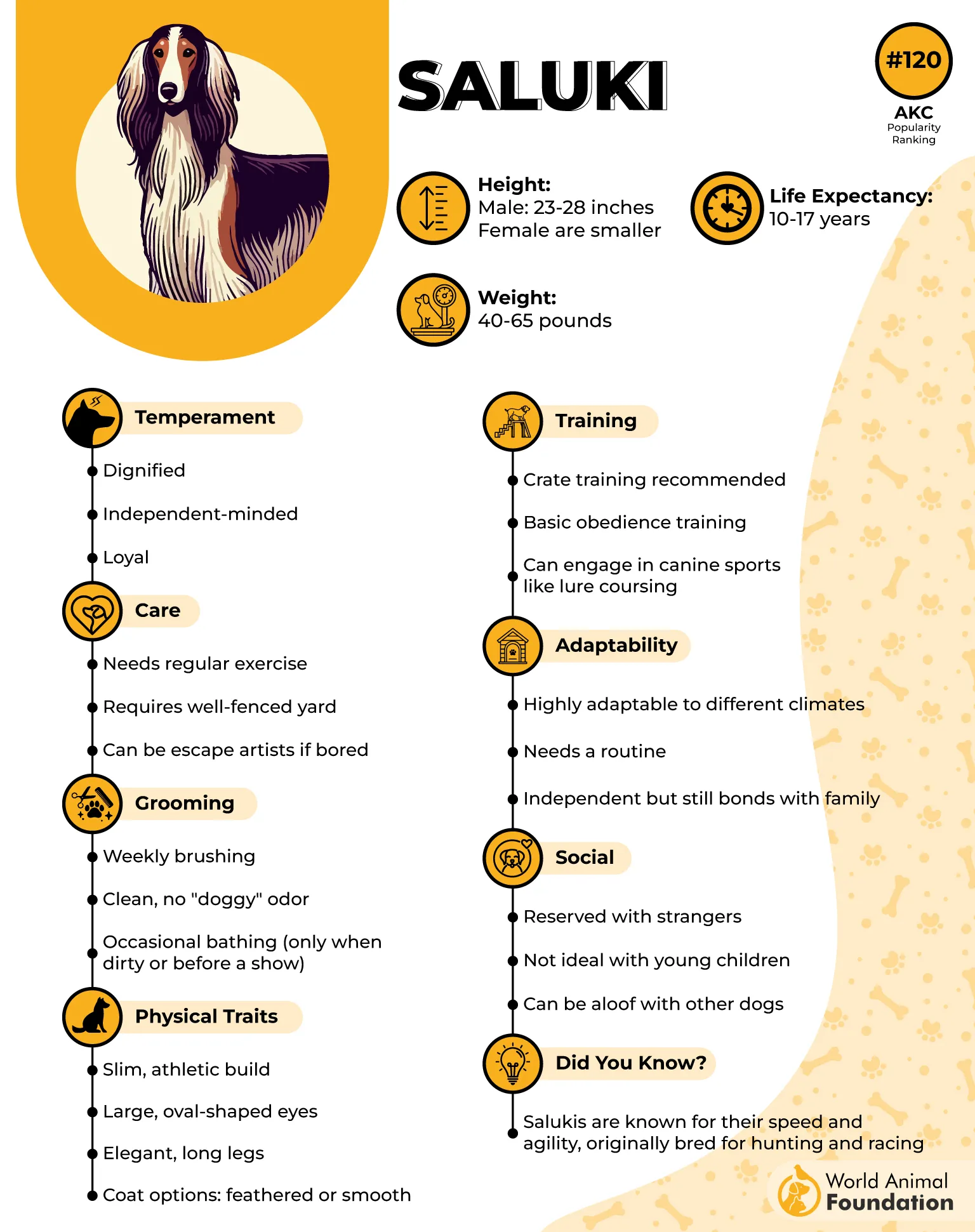
Salukis aren’t your average couch potatoes—they crave wide-open spaces to stretch their legs and chase whatever catches their eye.
Because of their hunting instincts and high energy, they’re not the best fit for apartment living or first-time dog owners who aren’t ready for a challenge. But if you have the space, patience, and heart, you’ll gain a dog that’s both majestic and loving.
Fun Fact: The Saluki was once known as the “royal dog of Egypt,” and its graceful gait was said to inspire ancient artwork.
2. Labrador Retriever
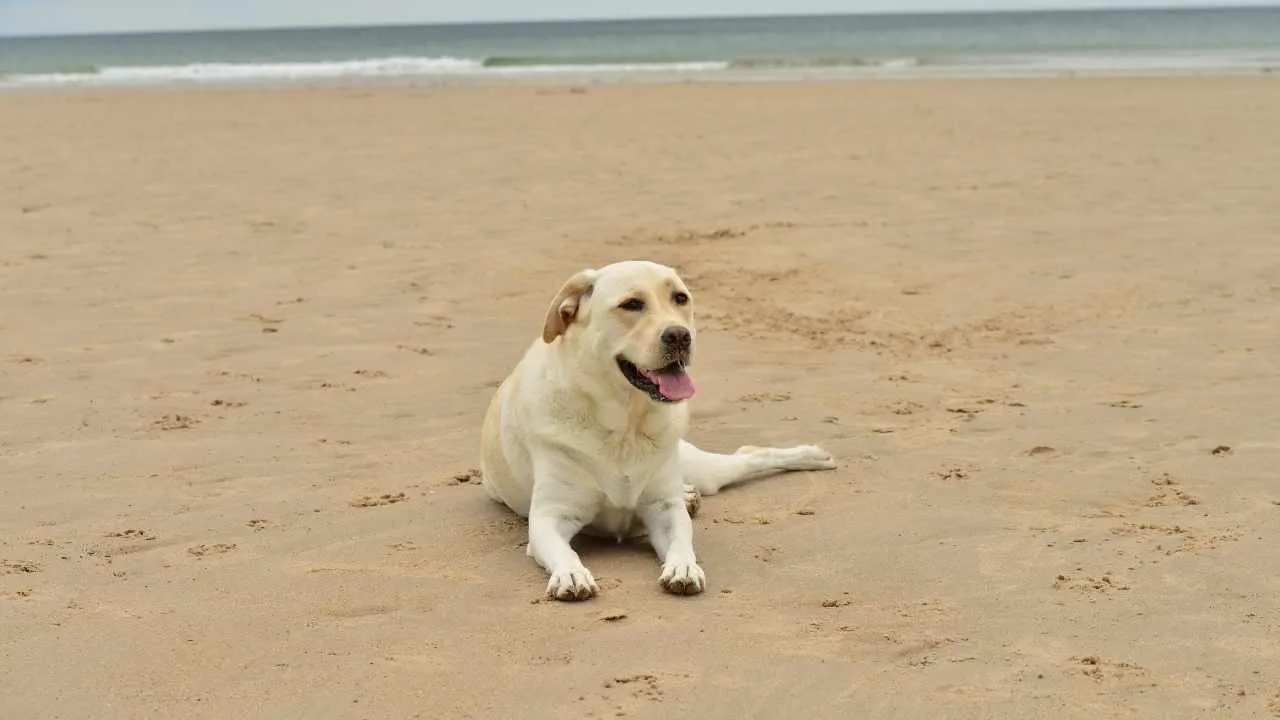
Average Lifespan: 10-12 years
Height: 21.5-24 inches at the shoulder
Weight: 55-75 lbs
Labs are like the world’s best cheerleaders packed into a furry, wagging tail. The Labrador Retriever is one of the most popular dog breeds in the world—and for good reason.
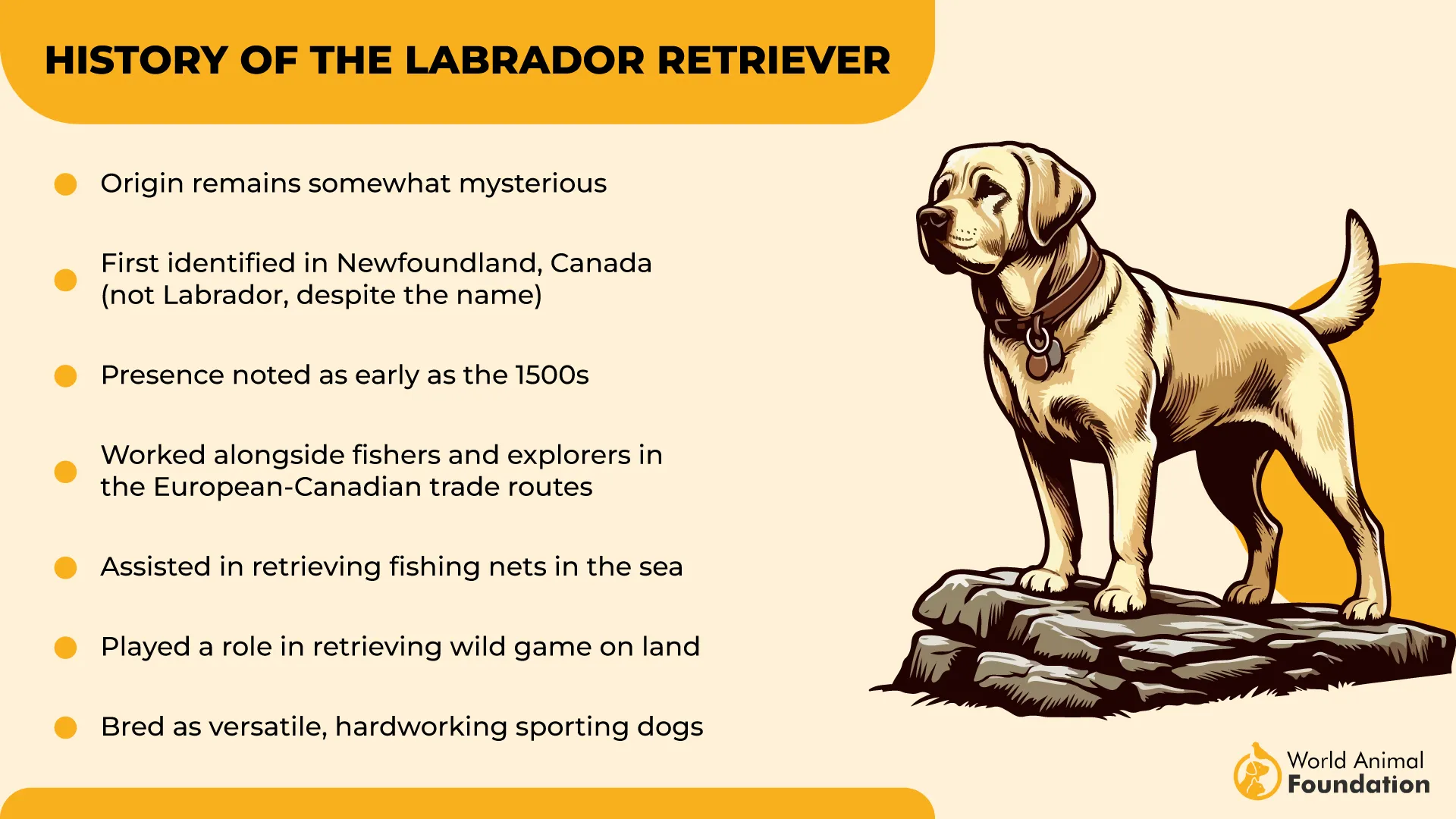
Originally bred in Newfoundland to assist fishermen by hauling nets and retrieving fish, Labradors evolved into versatile hunting and service dogs thanks to their intelligence, eagerness to please, and excellent swimming abilities.
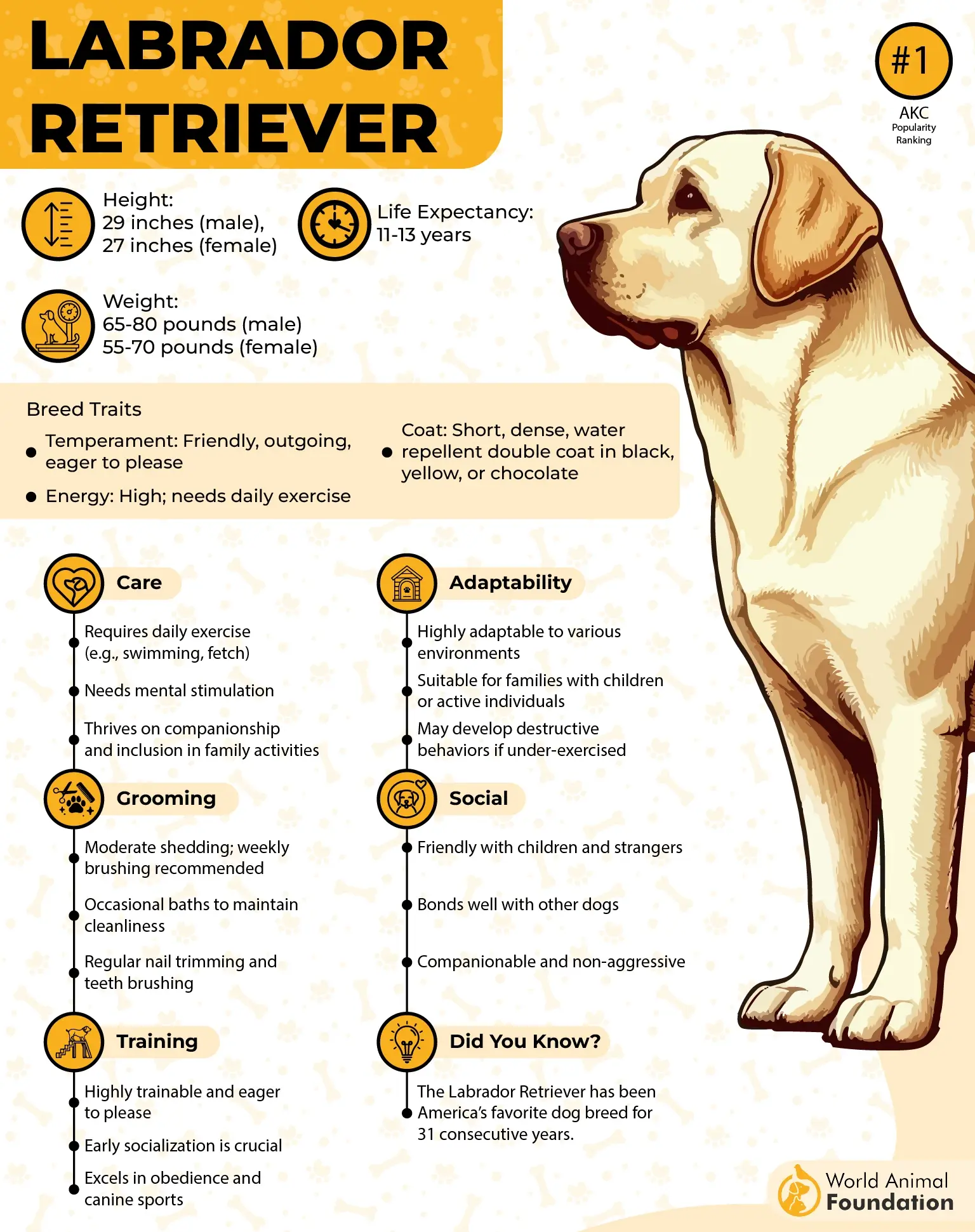
Their signature traits include expressive eyes, a famously wagging tail, and a heart full of affection. Labs come in three classic colors: black, yellow, and chocolate. Known for their friendly nature, boundless energy, and deep loyalty, these purebred dogs have long been cherished as family pets, working dogs, and devoted companions.
They are typically a healthy breed, but pet parents should be mindful of a few potential health concerns. Ear infections are fairly common, and they may also be susceptible to genetic conditions like tricuspid valve dysplasia—a heart defect affecting the valves—as well as joint issues such as elbow and hip dysplasia.
Purina says with all that energy, Labs need plenty of daily exercise and mental stimulation—otherwise, they might turn your favorite shoes into chew toys or audition as your personal alarm system with some enthusiastic barking. Early socialization and training are key to helping these happy-go-lucky pups grow into well-mannered adults.
Fun Fact: Labs have a “soft mouth” instinct, which means they’re excellent at gently retrieving things, perfect for fetch or rescuing your missing socks!
3. Golden Retriever
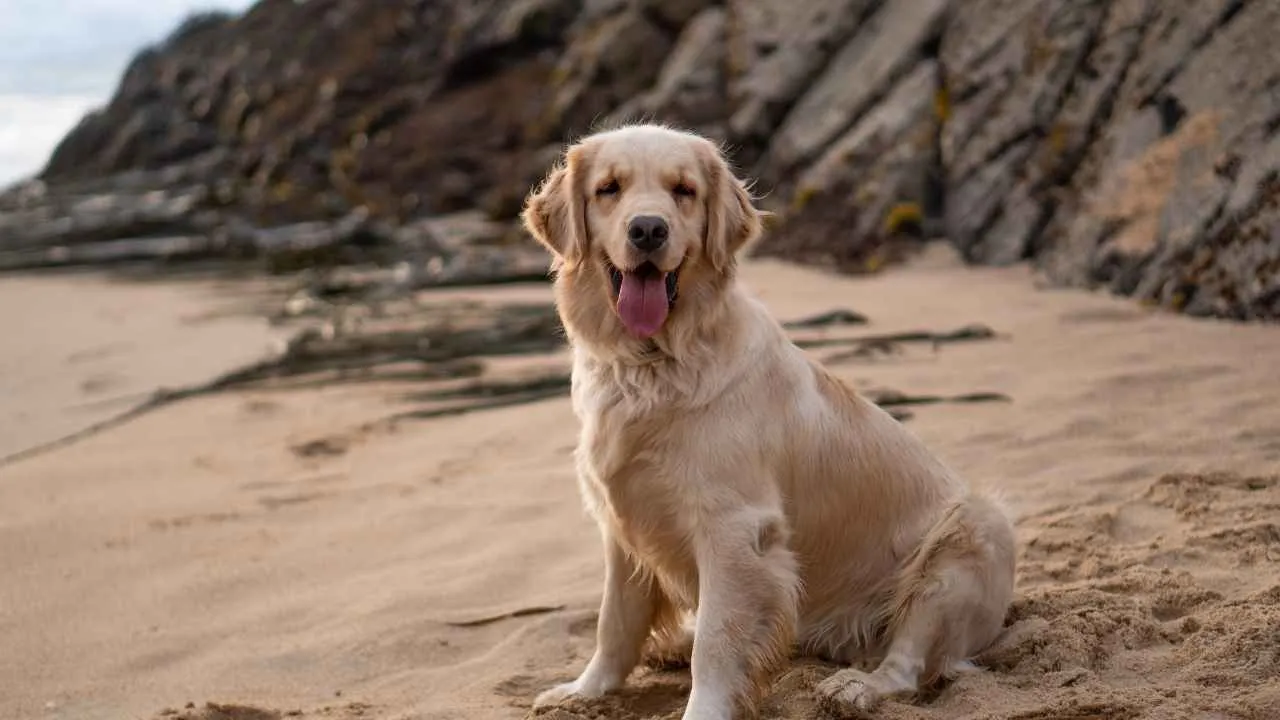
Average Lifespan: 10-12 years
Height: 21.5-24 inches at the shoulder
Weight: 55-75 lbs
Originally bred in Scotland in the mid-19th century to retrieve game during hunting, Goldens quickly won hearts with their gentle temperament and eagerness to please. Golden Retrievers are the embodiment of friendliness and loyalty, sporting a luscious golden coat that shines almost as brightly as their personality.
Golden Retrievers are medium to large dogs with a beautiful, dense, water-resistant golden coat that shines in sunlight. Their expressive eyes and friendly smile reflect their kind and trustworthy nature.
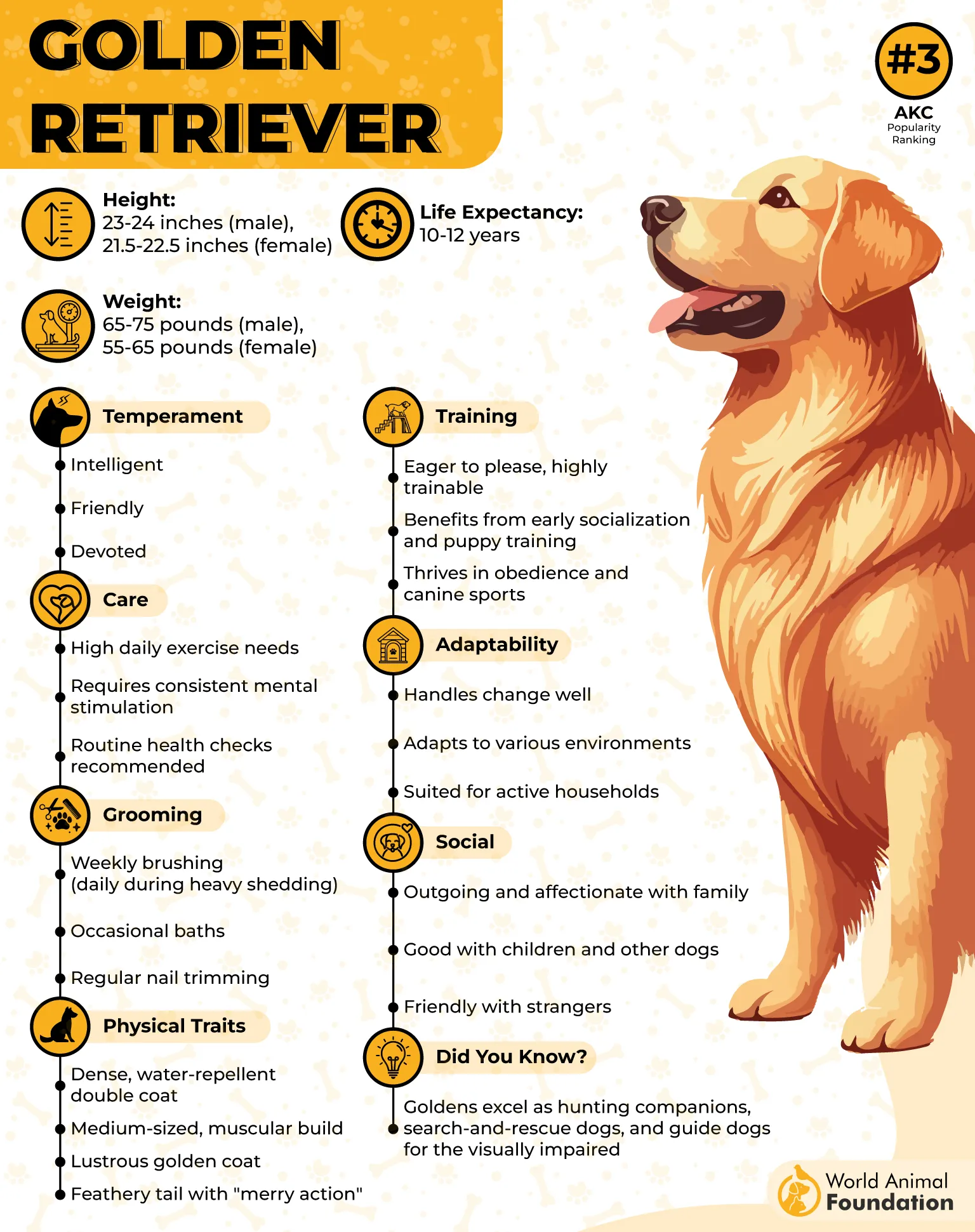
These dogs are forever young at heart and make fantastic family pets, therapy dogs, and all-around best friends. Golden Retrievers thrive on companionship and activity—they love long walks, swimming, and games of fetch.
Golden Retrievers are typically healthy dogs with robust constitutions. However, poor breeding practices can sometimes lead to a few health issues in the breed. Responsible breeding and regular veterinary care are essential to help keep these lovable, friendly dogs happy and thriving.
Thanks to their intelligence and eagerness to please, they excel in obedience, therapy, and assistance roles. Whether they’re playing with children or relaxing by your side, Golden Retrievers fill any home with love, comfort, and happiness.
Fun Fact: Their friendly smile is scientifically proven to melt hearts—resistance is futile!
4. Belgian Malinois

Life Expectancy: 14-16 years
Height: 22-26 inches at the shoulder
Weight: 40-80 lbs
If you want a dog that’s basically a four-legged superhero, the Belgian Malinois fits the bill perfectly. The Belgian Malinois is a powerhouse of intelligence, agility, and devotion—often mistaken for the German Shepherd, but in many ways, even more intense.
Originally bred in Belgium as a herding dog, the Malinois has evolved into one of the most elite working breeds in the world, serving in Police, military, search and rescue, and protection work.
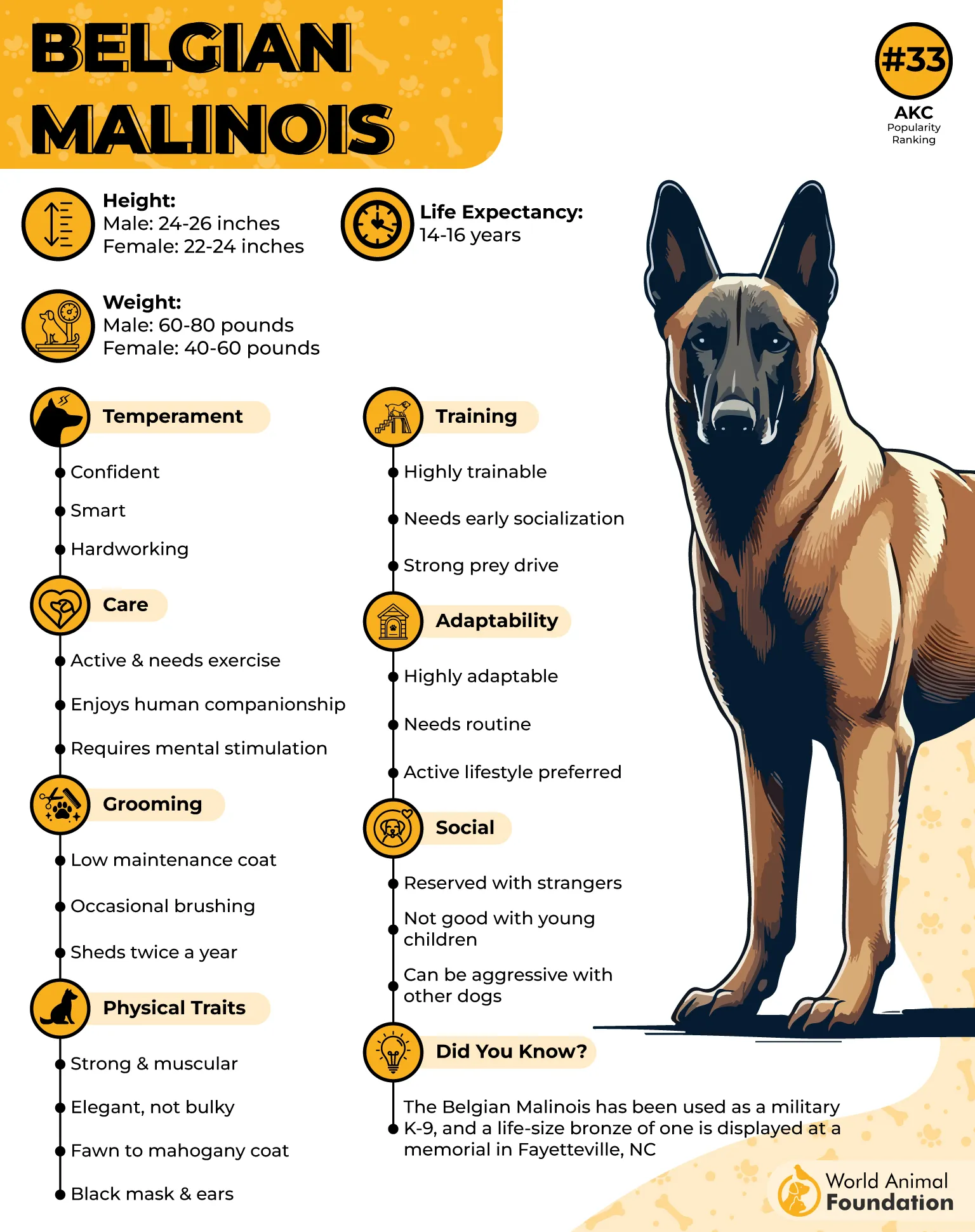
But beneath the tough, driven exterior lies a fiercely loyal companion who forms deep bonds with their family. This breed is not for the casual dog owner—they require a great deal of exercise, training, and mental stimulation.
Compared to many other breeds, Belgian Malinois tend to have fewer health problems, especially when sourced from a responsible breeder. However, they can still be prone to certain medical conditions. Some common health concerns for the breed include elbow and hip dysplasia, cataracts, and Progressive Retinal Atrophy (PRA).
Boredom can lead to destructive behavior, but when given a job and a structured routine, the Malinois thrives. They’re not just athletes—they’re thinkers, too. For experienced handlers or active families with time to commit, the Belgian Malinois offers unmatched loyalty, intelligence, and heart.
Fun Fact: Belgian Malinois can jump so high and move so fast, you’d think they had springs for legs!
5. Doberman Pinscher
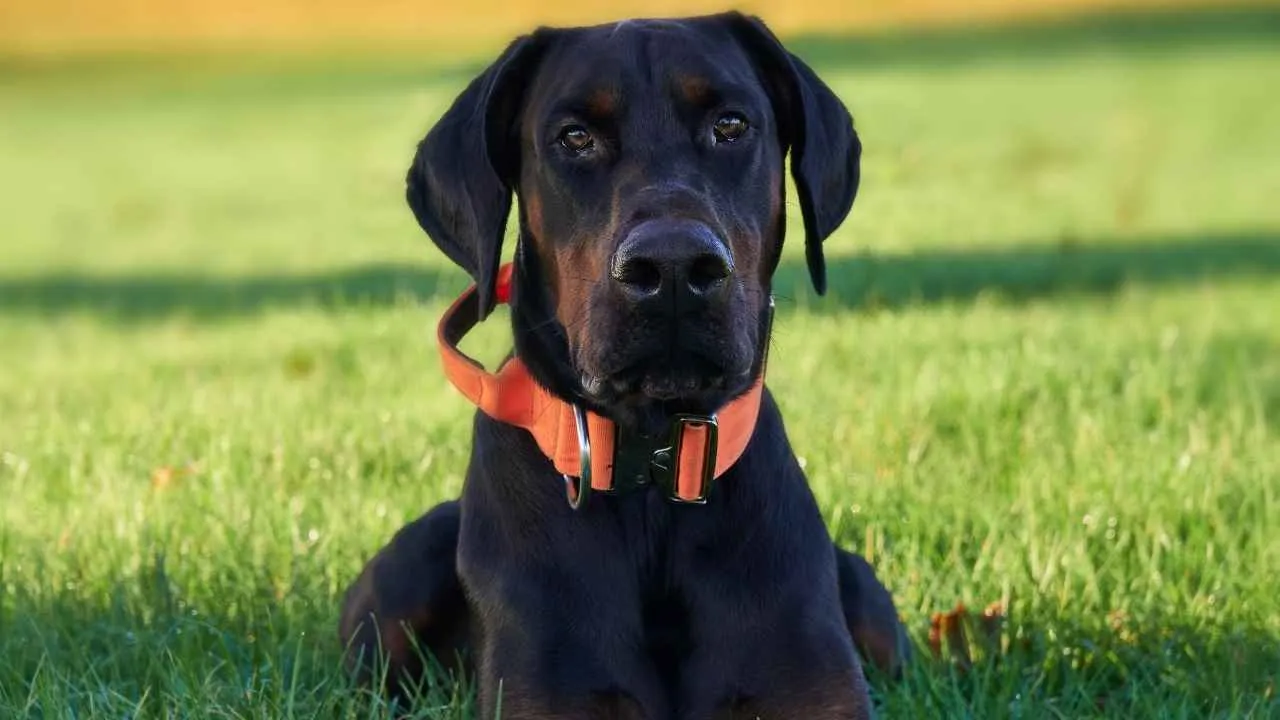
Life Expectancy: 10-13 years
Height: 24-28 inches at the shoulder
Weight: 60-100 lbs
The Doberman Pinscher is the definition of sleek power and elegant athleticism. With a muscular build and a sharp, alert expression, this breed looks like it just stepped off a runway—ready to protect the family and dazzle the neighbors.
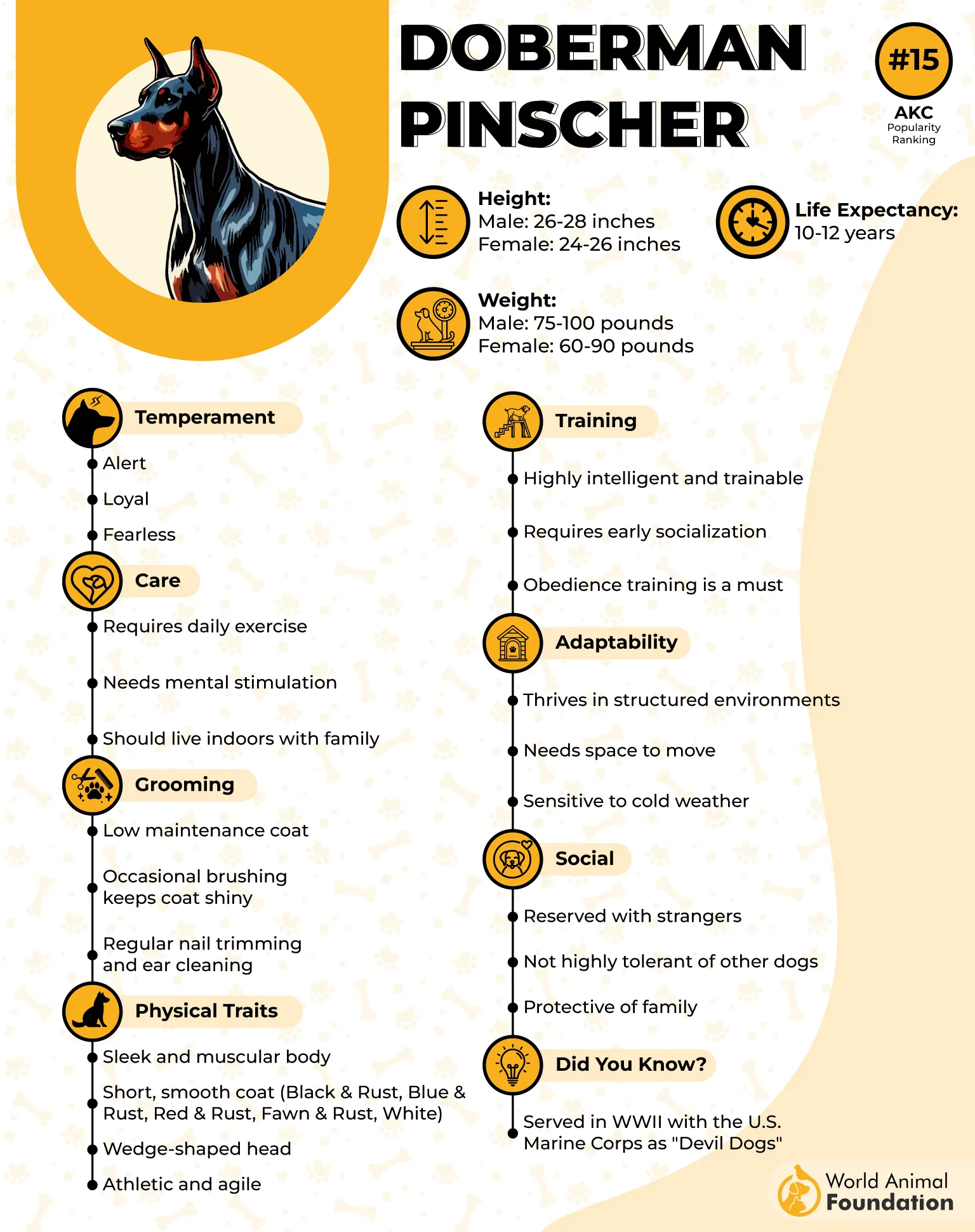
According to Britannica, the Doberman Pinscher is widely recognized as one of the most efficient military dogs and protective family guardians. Known for being vigilant yet typically calm, it will only raise an alarm when there is a genuine reason to do so.

Dobermans are fiercely loyal and make excellent guard dogs, but don’t let that tough exterior fool you. They’re also big softies who love cuddles and family time. Dobermans are incredibly smart and trainable, always eager to learn new tricks or tasks (especially if treats are involved).
Dobermans, while generally healthy, are prone to a few specific health issues that owners should keep an eye on: Dilated Cardiomyopathy (DCM), Hip Dysplasia, Von Willebrand’s Disease, and Hypothyroidism. Regular vet check-ups and early detection can help manage or prevent these issues effectively.
They have lots of energy and need regular exercise to keep their minds and bodies happy—without it, they might invent new ways to test your patience (hello, zoomies and “creative destruction”).
Fun Fact: Despite their fierce reputation, Dobermans have been called “the world’s greatest nanny dogs” for their gentle and protective nature around children.
6. Standard Poodle
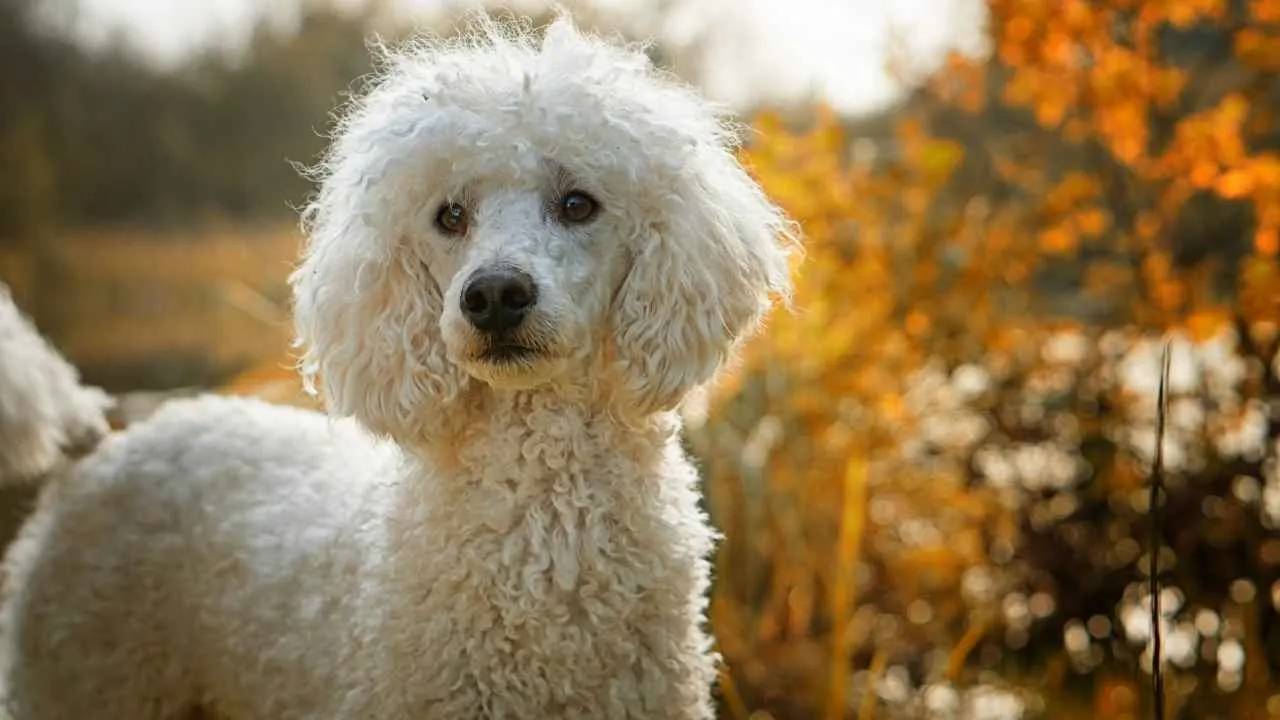
Average Life Expectancy: 12-15 years
Height: 18-24 inches at the shoulder
Weight: 40-70 lbs
Back in the 18th century, poodles strutted their stuff as show dogs, quickly stealing the spotlight.
Over time, they were lovingly divided into three sizes: standard, miniature, and toy. The standard poodle, the biggest of the bunch, remains one of the most beloved dog breeds worldwide — and it’s easy to see why!
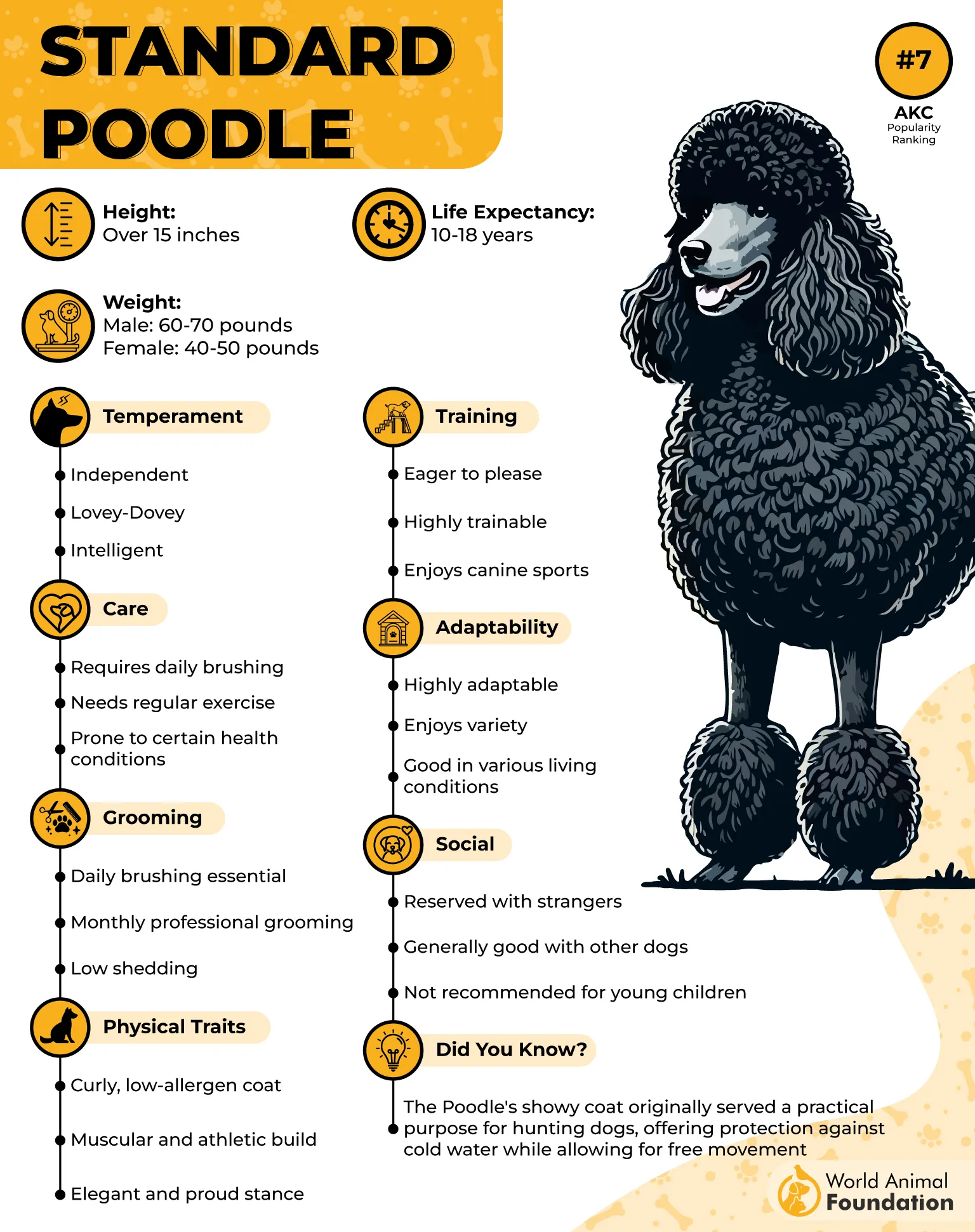
These elegant pups are fantastic with kids and overflow with affection, making them excellent family companions. But don’t be fooled by their poise—they can be a bit sensitive and might prefer a calmer home rather than one buzzing with constant noise or chaos.
These pups are also the most intelligent dogs, always ready for a game or a challenge to keep their sharp minds busy.
Standard poodles come with a gorgeous coat that’s either curly or wavy, but heads up: they’re high-maintenance fashionistas. Their luxurious fur needs brushing several times a week, regular baths, and nail trims every few weeks to keep them looking sharp.
Basically, owning a standard poodle means you’re signing up for a fabulous grooming routine — but hey, their stunning looks and loving nature make it totally worth it!
7. Alaskan Malamute
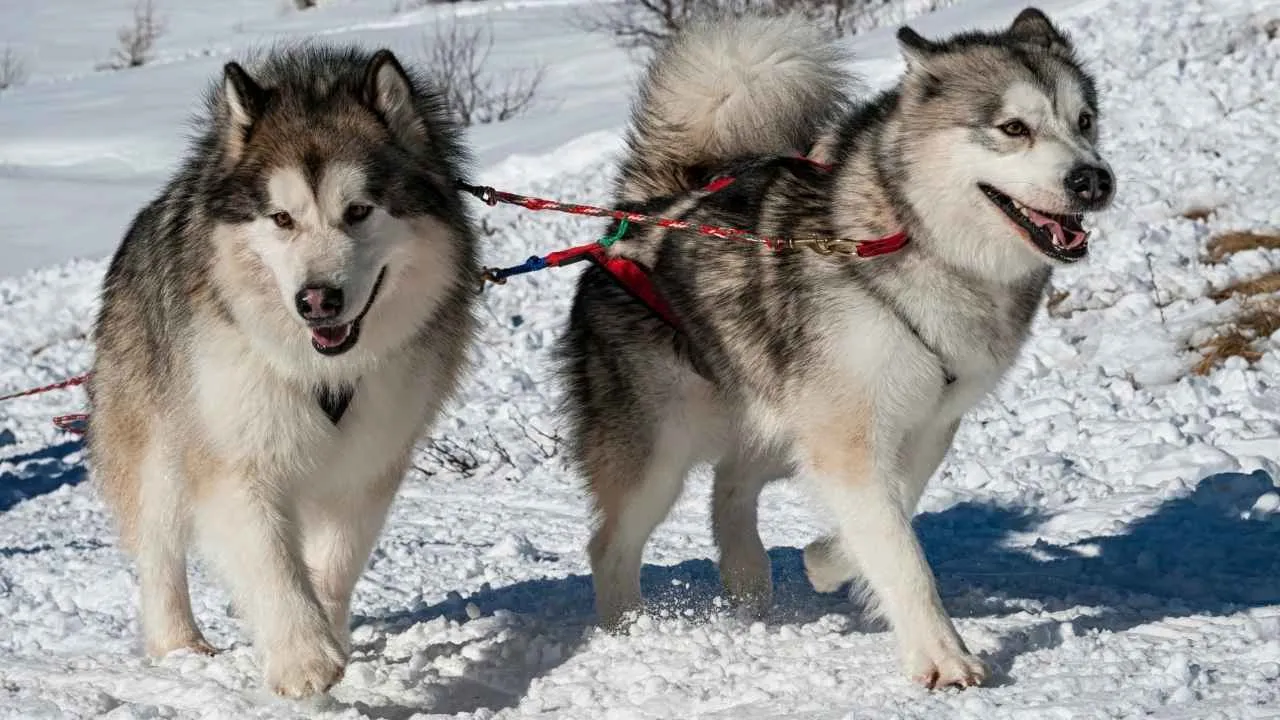
Lifespan: 10-14 years
Height: 23-25 inches at the shoulder
Weight: 75-100 lbs
If you want a large dog that looks like it just walked off a snowy mountain set of a blockbuster movie, the Alaskan Malamute is your big, furry dream come true. They’re like the giant teddy bear of the dog world, but with muscles that say, “Don’t mess with me… unless you’re offering snacks.”
These strong, sturdy dogs were bred to haul heavy loads over icy terrain, so don’t be surprised if they’re secretly training for a canine CrossFit competition. They come with a thick double coat that keeps them warm but means you’ll find Malamute fur in places you never thought possible — like inside your shoes.
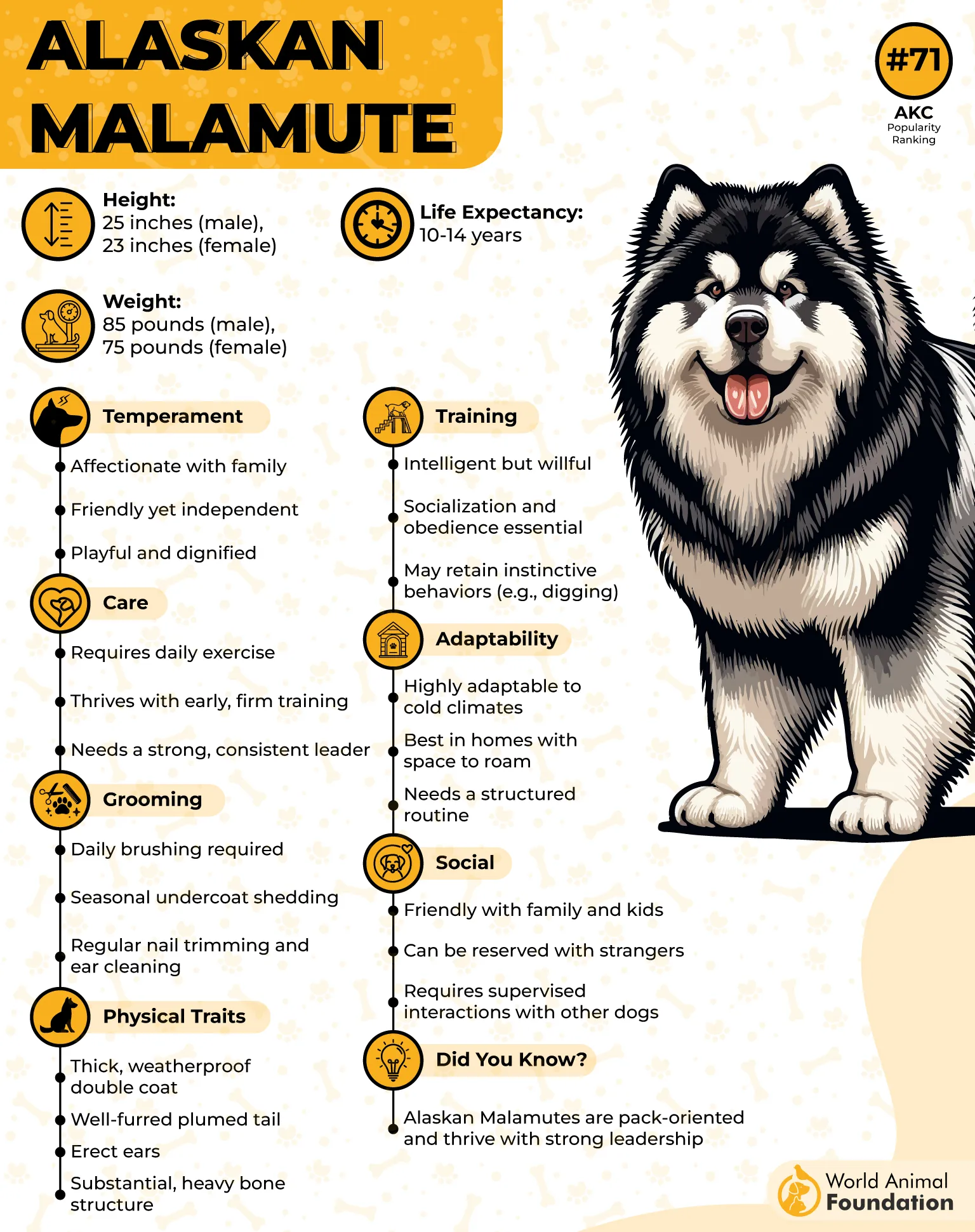
Despite their wolf-like appearance, Malamutes are affectionate and love being part of the family, though they can be stubborn and independent. Without daily runs or play sessions, these giant breeds tend to be creative… and by creative, we mean “digging holes like a mini tornado” or “redecorating your yard with strategic destruction.”
According to AKC, a well-trained Malamute is a true delight—playful, kind-hearted, sociable, and fantastic around children.
So, if you’re ready to welcome a furry friend who’s equal parts fluffy beast and loving companion, the Alaskan Malamute will be a big-hearted (and big-bodied) addition to your family for up to 14 years of snow-day fun and endless cuddles. Just be prepared to share your space… and your snacks.
Conclusion
While smaller dog breeds like the Toy Poodle, Chinese Crested Dogs, and Yorkshire Terrier are known for their long lifespan, some large dog breeds like the Australian Cattle Dog and Australian Shepherd also stand out with a long lifespan compared to other medium-sized dog breeds and even small dogs. In fact, an Australian Cattle Dog once held a spot in the Guinness World Records as the oldest dog, according to veterinary records.
Though great family pets, large breeds like the Great Dane tend to have shorter lives, but some specific breeds defy the average. With healthy weight management, proper dog food, and care, dogs live longer, especially when their average weight is kept in check. Breeds like the Miniature Schnauzer, Bichon Frise, Lhasa Apso, Shih Tzu, and Jack Russell Terriers also show that the average lifespan of 12 years can be exceeded.
Whether you love dogs, are exploring popular breeds, or considering breeds used as police dogs, understanding a dog’s lifespan and how long dogs live helps pet owners make better choices for a longer, healthier dog’s life.


